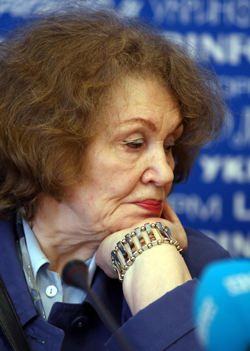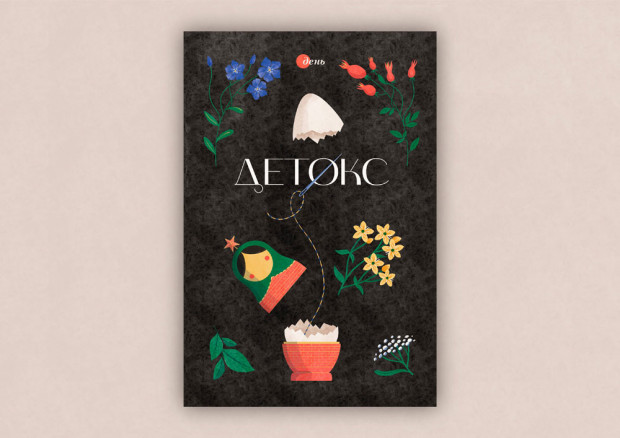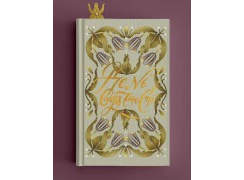Seeking place for Polissian Atlantis
Members of the exhibition to the Chornobyl zone together with Lina Kostenko keep a lookout for a place to preserve the rescued heritage
In 1993–2008 ethnographers, linguists, state officials, museum employees, and other caring people took part in 35 historical-ethnographic expeditions in the Chornobyl zone and amassed an astounding amount of material on the life of one of Ukraine’s most ancient ethoses — polishchuky (residents of Polissia, Polissians): over 41,000 historical-ethnographic and archeological items, nearly 125,000 scientific archival documents, including 80,000 photos and over 300 hours of audio and video recordings, as well 16,000 paper documents. All these materials now need a shelter, a separate museum.
Den’ has already written that in 2001 the rescue activities involving the cultural heritage in 350 villages of Central Polissia (specifically the villages located in the epicenter of the disaster) were undertaken by groups scholars and enthusiasts from institutes, higher education establishments, museums, and civic organizations in cooperation with the Center for Protection of Cultural Heritage in Ukraine’s Ministry of Emergency Situations. The center was reorganized into a separate research institution in 2007 and is now headed by Rostyslav Omeliashko. Lina Kostenko took part in nearly every expedition. It seems that her name should have drawn attention to the issue and resolved the problem with premises, but this is not so. State officials offer nothing but “understanding.”
“I am not optimistic, because the case reached the president’s attention a long time ago. The center was opened thanks to him, but then everything stopped,” Kostenko stated at a press conference organized to give publicity to this urgent matter. “There are so many of you here, more than in the Verkhovna Rada’s Chernobyl sessions, because these sessions are not interesting to anybody: people think that everything is okay there. As a person who has seen all these problems close-up, I’m telling you it’s all very sad. We are singing ‘Ukraine has not died yet,’ while there, in Polissia, it has already died.”
It has died because not more than 250 people are living now in the exclusion zone: some of them don’t have electricity, others—bread or medicine, while some drink water from the Prypiat or rainwater. They die because they lack medical treatment; some are killed by escaped prisoners, who are hiding in the forests, drunken neighbors, or a wild boar. “Because these people live in conditions in which it is impossible to live,” Kostenko said. To keep the unique culture of the Polissia land from vanishing with its residents, the research group, which has gathered the unique samples of “Chornobyl Atlantis,” wants to revive it at least in our memory.
“In 1989 we saw an entire continent die – a culture that is of ethnogenetic meaning for Ukraine, since the ancestor land of Slavs was formed here 3,500 years ago. Unfortunately, this territory is worse studied than the other regions of the country.
Moreover, it is being covered by a black shadow now. But we made eight to nine expeditions a year: there is hardly any village where we haven’t been.
“As a result of the archeological survey, in 2003 we discovered the 11th-12th-century Chornobyl culture and an early neolithic site dating back 6,000 BC, as well as a number of archeological monuments of different periods in the contaminated areas of the Zhytomyr region. The only way to rescue all this is to carry out comprehensive research and create a scientific-informational fund (museum-archive), which will recreate the cultural-historical model of this region,” said Omeliashko with conviction.
Several years ago we saw the release of the film Chornobylsky chas (Chornobyl Time, director Leonid Muzhuk), which is based on the materials of the expeditions. Also released were over 30 scientific and popular science publications and three CDs with Polissian traditional music. The research group has recently succeeded in publishing a four-volume edition dedicated to the dialect of the Polissian village of Masheve. Another book is dedicated to the wedding rituals of Polissia residents. According to Omeliashko, “four or five volumes can be published on each village.” Kostenko has also accumulated a huge amount of materials for her research and at the moment is working on the books about the Chornobyl zone.
“I have seen everything close-up. This is a great material. No writer in the whole world has the material that we have. For example, the village of Zasillia is dead; the windows are broken. It is winter. A layer of snow is on the floor, the floor is covered with ice, but there are photos of people who used to live there. I need to take them from under the ice. I start rubbing the ice to make it melt, and then suddenly I am terrified. I ask myself, What am I doing here? I am taking the face of my people from under the ice, whereas almost nobody needs this,” Kostenko recalled.
Nonetheless, in spite of her pessimism, the writer and other members of the expeditions, who have long turned into friends for one another, hope that the government will hear their voice and will make available a building for the “Chornobyl Atlantis” museum-archive, which requires up to 3,000 square meters.
“What can be done in order to make this center operate in a normal way? It does not have a place to operate. God forbid us from continuing in the same way — all our efforts will be in vain then. But something has to be done, because the expedition is priceless,” Kostenko said. “I asked myself, whom do we have? Journalists! These are the eyes of the society that does not see and the voice of the society that does not hear. Therefore I am pinning big hopes on journalists, because I have given up hope for both MPs and state officials.”






